By Yusuf Serunkuma
It took many months before Uganda registered – or announced – its first Covid-19 death. July 2020. About four months after the pandemic had reached Kampala. The number of positive cases also remained comparatively low. Mostly, President Yoweri Museveni’s directives – especially the tightly and dangerously enforced lockdown – were cited as the reasons for the Covid-19 success story in Kampala. Indeed, Museveni even got special recognition from the Ugandan parliament for “exemplary and insightful leadership” in the fight against Covid-19. There was also plenty of praise for the personnel at the Ministry of Health, especially Minister Jane Ruth Aceng, and Permanent Secretary Diana Atwine, for their efforts during the pandemic. Constantly contrasted against Burundi and Tanzania’s less strict [but arguably more home-grown] responses – and accusations by Ugandan journalist, Andrew Mwenda, that truck drivers from Tanzania were a key source of infections – Uganda’s star shone even brighter against her struggling neighbours. Tanzania was burying victims in the night and didn’t the former Burundi President, Pierre Nkurunziza, die of Covid-19, too? Who would believe it was just a heart attack, as had been reported, Mwenda asked rhetorically. All this portrayed Uganda as the star of the region in the Covid-19 fight.
My intention in this essay is to ethnographically narrate the reality of Museveni’s lockdown and other directives on Covid-19 from the bottom-up. I focus on the ways in which ordinary folks interpreted the directives in ways that, despite being agreeable to the directives-enforcement teams, were simply inconsistent with the Covid-19 mitigation agenda. My usage of the term “interpret” picks from discourses of communication where the messages or cues communicated tend to differ from that which is understood, and implemented. My intention is to capture the ways in which communicated dictums were translated into practice. Ethnographic explorations indicate that there were major differences between what the directives communicated, and sought to achieve and the actual translation, interpretation and implementation of the communicated instructions. My contention is therefore twofold. Firstly, in heaping praise onto Museveni and his medical and security teams, the world misread the brutality of enforcement for effectiveness and compliance. This blinded observers to the incongruent ways in which ordinary folks interpreted Museveni’s directives for the purpose of demonstrating obedience. Indeed, the implementation of these directives was simply symbolic, disconnected from the primary objective to control the spread of Covid-19. Secondly, there is deliberate blindness or glossing over of the ways in which the public simply continued their lives as normal but hid this behaviour from the state. In other words, people simply went underground but continued to enjoy various manners of social life that were supposed to be prohibited. Meanwhile, when in public spaces, people remodified their ways of operation in ways that subverted the intended outcomes of the directives. In some cases, ordinary folks actually conscripted sections of the state to facilitate their underground lives. To this end, it does not seem that Museveni and his lockdown are to thank for comparatively mild ways in which Covid-19 has affected Uganda.
The other part of my argument is that this evasion or skillful re-invention of directives to fit what was actually practical – that which rhymed well with implementation/enforcement teams – springs from two core contestations. The first is the inherent mistrust between the state and the citizen and the assumption that the state endlessly lies or uses pandemics and other disasters for selfish ends. The second is the problems with the directives themselves – they were bad in the sense that they were not only lacking in context as Alex de Waal and Paul Richards observed, but were also “theoretically incomprehensible and practically impossible.” Neither the ordinary folks nor the implementation/enforcement teams understood them as practical in the strictest sense. On the livelihood question, for example, it soon became a choice between death from the virus or starvation, and death from the virus was preferrable to the ignominy and embarrassment of starvation.
Gone underground
The stories that follow are personalized ethnographic narratives bordering on travel writing. But as John Comaroff has noted, anthropology resembles travel writing, but with theoretical reflections and commentary. Let’s get into it.
The UEFA Champions League final found us at work somewhere in Ntinda, one of Kampala’s posh suburbs. We really wanted to watch PSG play Bayern Munich as these are some of the most exciting teams in world football. Sadly, however, the game coincided with a tight deadline. Together, we settled for live updates and other online commentaries while we sat in the office. But luckily, work would be finished as the game entered the halftime break. We thought we would need to rush home to catch the remaining minutes. But colleagues who lived in this neighbourhood were confident we would catch the game in any nearby major bar. They were aware these socialising places remained opened throughout the entire period of lockdown in Uganda, despite not being essential services.
We turned into the nearest bar, arguably for affluent clients. It is situated on almost half an acre of land. The bar looked dark from afar but became better lit the closer we came. While the lights in the drinking areas were turned off, the lights in the parking lot had been adequately re-directed. To our pleasant horror, the bar was a full house. The game was playing on large muted screens. The light from the screens provided more light to the tables where customers were merrymaking, and enjoying the game. Non-football junkies were seated in the dimly lit expansive compound enjoying wines and social banter. Skimpily dressed damsels roamed the area to the delight of revelers. The barmaids were equally busy. People interacted with each other without any care for Covid-19. No masks, no social distancing. Some partiers could be seen lasciviously entangling in the more dimly lit corners of the bar and compound. The cheering and game excitement had to be mild or muted. But once in a while an excited fan would loudly gasp at a missed goal or a wonderful dribble. There is no doubt these people, like us, had come from different localities and had been in contact with hundreds of others. But this was in the thick of an anticipated contagion, in the tightly enforced lockdown, and these god-blessed folks were here mingling freely.
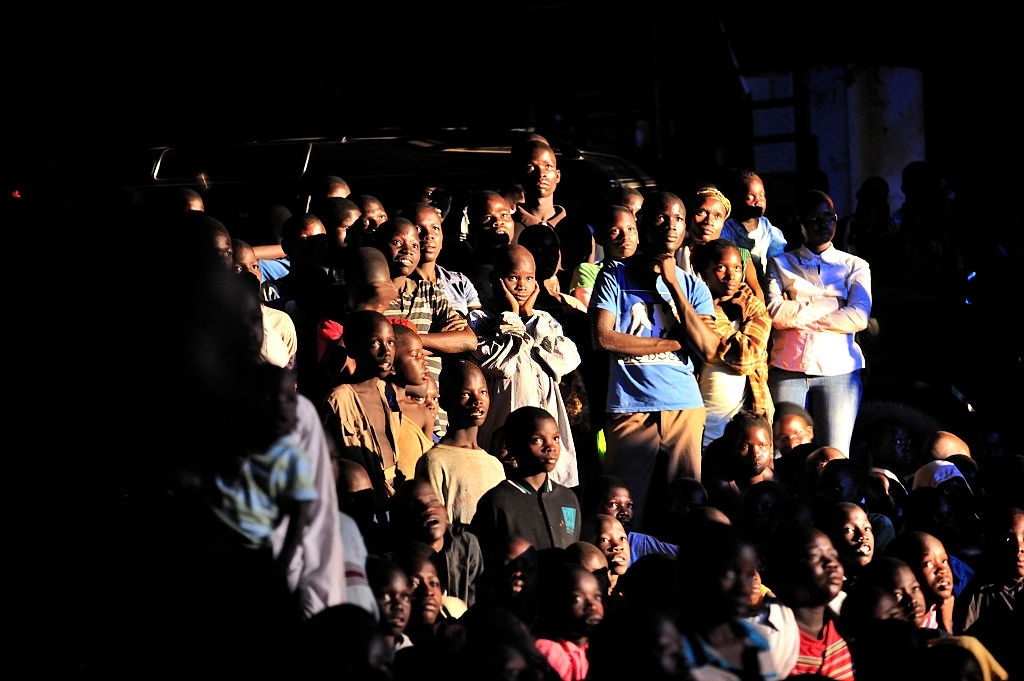
I had heard similar stories before. A colleague of mine who lived in the less affluent Kampala suburb of Kyebando narrated how solidarities were mobilized in watching football games late in the night inside the makeshift football-cinema halls – in total disregard of curfew and lockdown regulations. But let’s start this story from the beginning. Most Kampalans, the majority of whom cannot afford DSTV connectivity in their homes, have one option of watching their favorite league, the English Premiership – in makeshift halls often made out of wood or secondhand iron-sheets. The 2019 English Premiership, which had been suspended due to Covid-19, resumed while Uganda was still under lockdown and curfew. But Ugandans could not miss their games, which often aired late in the night – often outside curfew time. They had to develop a way of watching these games outside of lockdown and curfew regulations. Like happened in the rich neighbourhoods, games here are also watched on muted screens. No cheering or openly debating proceedings was allowed. Again, there were no lights except the light emerging from the screens. At the conclusion of these games, you were not allowed to exit all at once – as happens under normal times – rather, in groups of two or three. And those on the outside made sure to alert those who had remained inside on the state of the road. Once caught by the state, you would not snitch on those left behind, but rather had to find a way of alerting them of the danger you had befallen. These codes enabled an underground anti-lockdown football-watching economy to thrive – clearly compromising government’s anti-contagion agenda.
The methods described above worked well for most bars and local cinema/football halls across Kampala, and most major towns. In a few cases, enforcement teams apprehended people it found in violation of Covid-19 directives. Some would be found in bars, while others were simply driving their vehicles and motorbikes during curfew hours. The picture that emerges with these arrests is that there were violations on a large scale, taking different forms. Only a few were arrested. Indeed, quickly, ordinary folks learned to conscript police and other enforcement personnel into their “outside-of-the-state” survival modes. In many cases, the proprietor of a bar or local cinema/football hall entered into an arrangement with the area police station – which was charged with enforcing the directives. This allowed them to stay open. At a small fee, the Officer in Charge of the area police station [unofficially] allowed the games to be screened under specific Standard Operating Procedures. These guidelines – such as muted television sets would be slight inconveniences compared to not socialising or missing a game entirely. Interestingly, neither of the SOPs agreed between bar-owner and police involved anti-contagion strategies such as social distancing, masks or washing of hands.
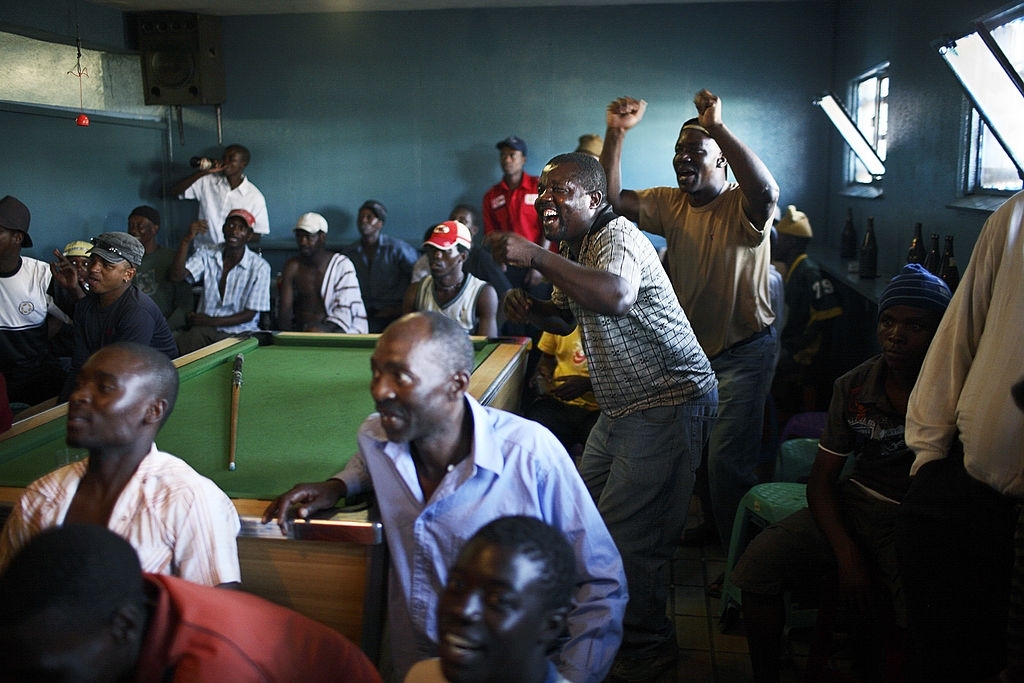
The patterns described above were also true of saloons, which often opened for clients and locked their doors once the clients were in. Someone would scan the place for enforcers before opening their doors. Or other saloons simply kept the front doors closed, allowed dust to gather at the front, and allowed access to the saloon from the back door. If saloon owners were too afraid to operate at their premises – as police often broke into these “closed-open” saloons – the saloon simply shifted to the personal homes of the hairdressers. Clients would find their favorite dressers at their homes by prior arrangement. No wonder, a tweet once challenged President Museveni to ask the female ministers, who sat through his national addresses, where they were making their hair from since they returned to every address with a different style. It was the same story with schools, especially in semi-affluent neighbourhoods. They shifted to the homes of teachers. Although they were not to give learning based on the curricular, they kept learners engaged in some form of learning.
Translating directive
In truth, Museveni’s directives took a life of their own that was diametrically different from their intended public health ambitions. It started with the creation of fluid and difficult-to-define categories of essential and non-essentials. The essential services and spaces included some means of transport (especially cargo carriers, boda-bodas, bikes) markets, construction workers, industrialists/manufacturers, journalists, etc. The comedy of errors opened with the announcement that all those vehicles specially allowed to be on the road would be given stickers. Meant for only essential workers/service providers, stickers were quickly on the open market trading like hot cakes. At Ush. 250,000, one would get themselves a sticker, and they would be on the road roaming as they please. The price soon went down to Ush. 150,000 and later Ush. 100,000. Pictures of heavy traffic jams in the posh suburbs of Ntinda, Bugolobi, and Najera bamboozled many in the thick of lockdown. That police had to fight fake and legit stickers in non-essential hands for days on end, speaks to the risk the country was exposed to.
But the most revealing part of this collective deception was in the open markets. On every major road entering Kampala, and major town across the country, food products and fresh food product sellers were allowed to remain open. While the buyer was free to return home after making a purchase, it was required of the vendors to spend the night in their stalls. Indeed, images of vendors erecting mosquito nets in different markets across Kampala animated conversation for days. But since selling and buying is a network of interconnected businesses – the delivery boda-boda rider, the cargo truck – these remained operational and connected different parts of the country.
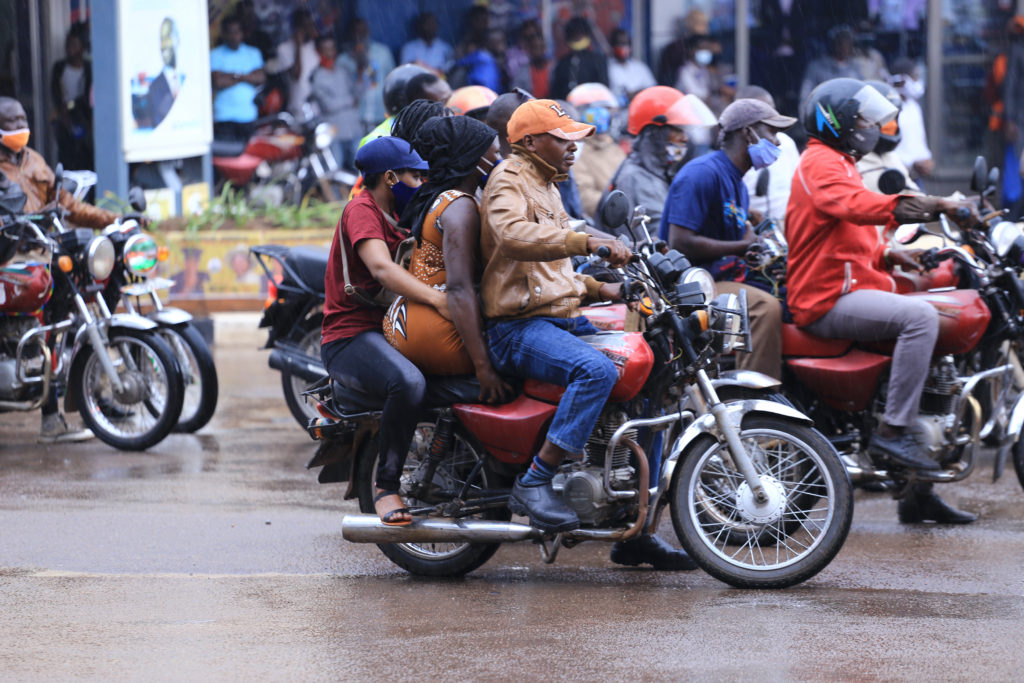
The SOPs for these open markets were themselves part of this long script of collective fictions. A water dispenser and soap for washing hands of incoming persons was planted at the most visible entrances into the market. But the commonest open food markets in Kampala and beyond have multiple entrances. Some entrances are simply invisible as they are hidden furthest at the back. Most of them have no walls around them, while some simply take the entire stretch of a road – with no clear-cut entrance. Markets were never surrounded by string nor was it a requirement to have water dispensers at every nook. For street markets in major towns, the story was most complex with regards to SOPs. The vendors would tie a string in front of their stalls indicating that the customer had to stand behind the string to make their orders. Although it was required that a stall had to attend to one client at a time, and the others behind them would be observing social distance, these directives were rarely observed – especially in the morning hours of intense market activity. While customers actually stood behind the string, fellow customers were often standing right next to each other. There was no enforcement, and no seller would insist on procedure in a market where 20 others sell similar items. Insisting on these inexplicable protocols would mean sending away your customers.
Enter the masks. When easing of the lockdown started, masks were an absolute requirement – to be worn covering the nose and mouth. The problems here ranged from the type of mask vended, the handling of these pieces of fabrics by mask vendors, and the ways they were worn. Perhaps a discussion on the quality and type of mask is too technical for this essay, but certainly they were not being worn properly. There was not enough attention given to teaching Ugandans how to wear their masks. There were a couple of ads here and there. It remains a familiar sight to find one wearing their mask with their nose exposed and the mask covering only the mouth. For the slight inconvenience suffered by speech under a mask, it became common for people to actually expose their mouths and nostrils when talking. Perhaps this trend was set in motion by President Museveni who lacked the discipline to address the nation under a mask. Instead, he often found reason to address the country without a mask, completely ignoring the cultural precedent he would be setting if he spoke under a mask. Another common sight is masks around the neck area. A symbolic gesture to show general compliance – and when enforcement teams are seen, one can easily pull it over their mouth and nose. The picture of people moving around or engaging in street conversations with their masks covering their necks instead of their nostrils defines our Covid-19 drama. In the end, having a mask became more a matter of protection against rowdy enforcement officers than as protection against Covid-19.
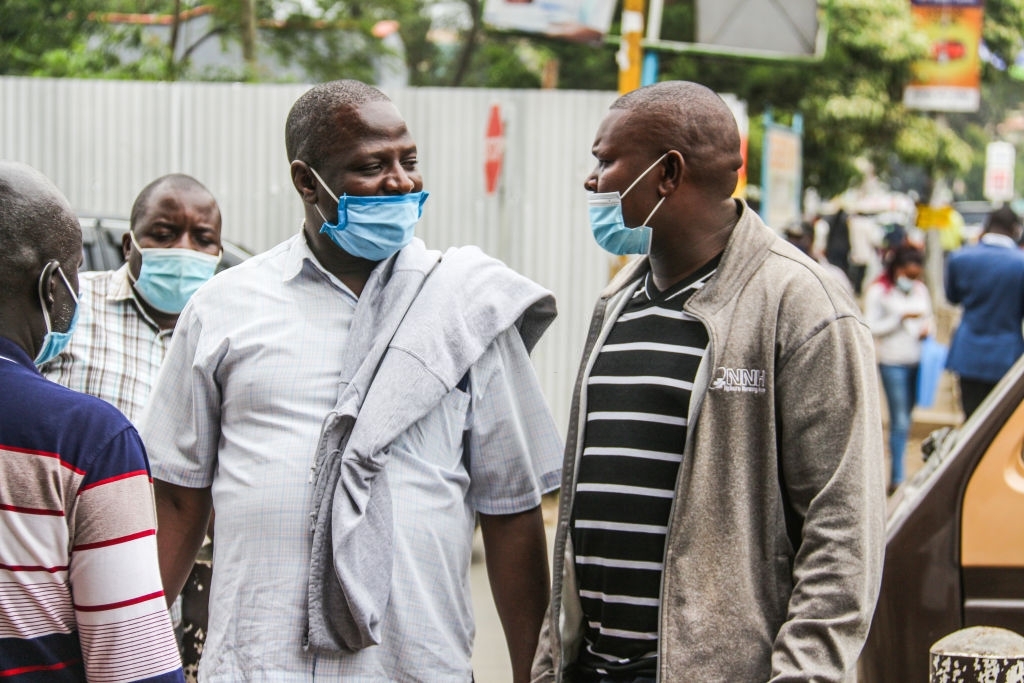
Interestingly, the interpretation and application of presidential directives on Covid-19 as described above were actually a product of organic responses by ordinary folks – not actions of protest by a politically conscious public – and were mutually agreeable to the enforcement teams. In the open markets and on the streets of Kampala, enforcement teams appreciated these symbolic gestures as being as good as compliance itself. As one security officer would say to me in respect of masks, “wear this thing when you see us so that we do not waste your time.” This meant, you can do as you please when by yourselves, amongst your peers, strangers and acquaintances alike, but appear to comply when you see us. Plainly speaking, this was an agreement to deceive each other against the threat of an epidemic that had been communicated as real and dangerous.
A mutually agreed fakery
It is obvious that if Covid-19 were a real threat in Kampala and were to spread as seen in Europe and North America– these deft and innocent violations would have exposed Museveni’s lockdown as empty and meaningless. In the strict sense, there was no lockdown meant to control the spread of Covid-19, but performative practices which, despite displaying the power of the state, badly crippled the economy, which will take years to recover. The reasons for this collective evasion and mutual deception spring from the failure to appreciate the special context in Kampala while constructing measures to control contagion. First, as earlier noted, lockdown was practically impossible in this space of agrarian peasant existence, food-to-mouth workforce. The practicality of these directives was simply lacking. The measures specifically were devoid of local sensibility. Were they to be applied, in the strictest sense, it would shut down the entire government. This was exacerbated by low levels of civic awareness, inherent distrust of the state, and the inherent quest for livelihood, which happens as a matter of daily life. Ugandans live in a permanent condition of precarity. Secondly, the agreement for mutual deception was also because the lockdown deprived or hurt both the enforcement teams and the ordinary folks the same way. If the ordinary person wanted to enjoy a game, so too did the enforcement officer. If the ordinary person had struggles finding food and water, so too did the enforcement officer. For this reason, many of them agreed to live in a fictitious world of lockdown.
Yusuf Serunkuma Kajura is a PhD Fellow, Makerere Institute of Social Research (MISR).


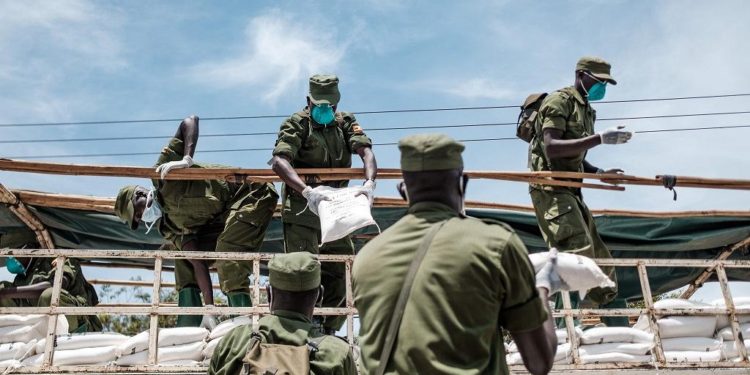







It’s going to be ending of mine day, except before finish I am reading this
wonderful article to improve my knowledge. https://vanzari-parbrize.ro/geamuri/geamuri.php